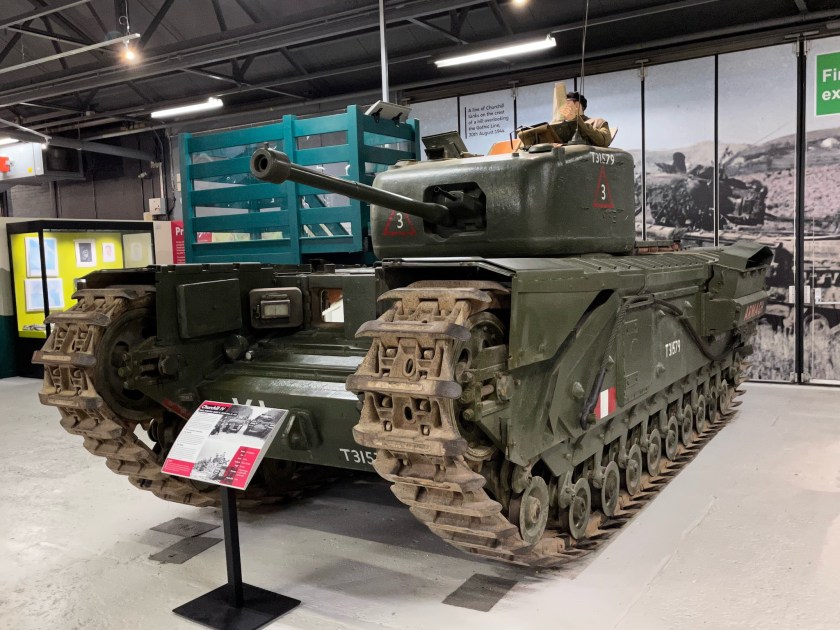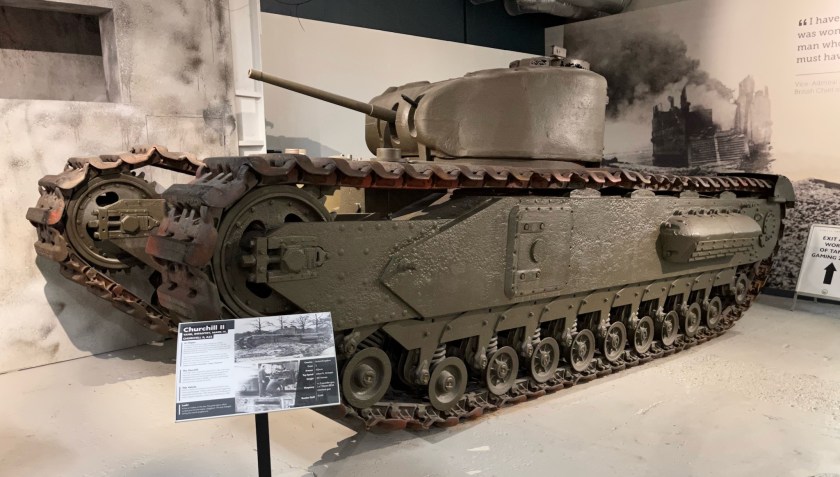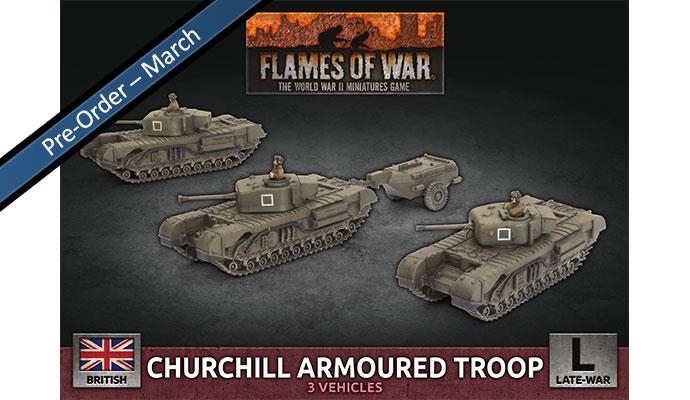The Tank, Infantry, Mk IV (A22) Churchill was a British infantry tank used in the Second World War, best known for its heavy armour, large longitudinal chassis with all-around tracks with multiple bogies, its ability to climb steep slopes, and its use as the basis of many specialist vehicles. It was one of the heaviest Allied tanks of the war.
The IV, the most numerous Churchill produced, was virtually identical to the III, the largest change being a return to the cheaper cast turret, keeping the welded turret’s “clean” squarish shape. A tank telephone was fitted to the rear of the tank for communication with infantry.
This Churchill IV was on display at The Tank Museum.
This Churchill has serial number T31579. It was originally built in 1941 as a Mark I or Mark II, then converted to a Mark IV. Its wartime service is unknown, but afterwards it was converted into a ‘Twin ARK’ bridging vehicle.
It was restored back to its wartime configuration by The Churchill Trust and loaned to The Tank Museum in 2018.
It is painted in the markings of 3 Troop, A Squadron of the North Irish Horse.


























